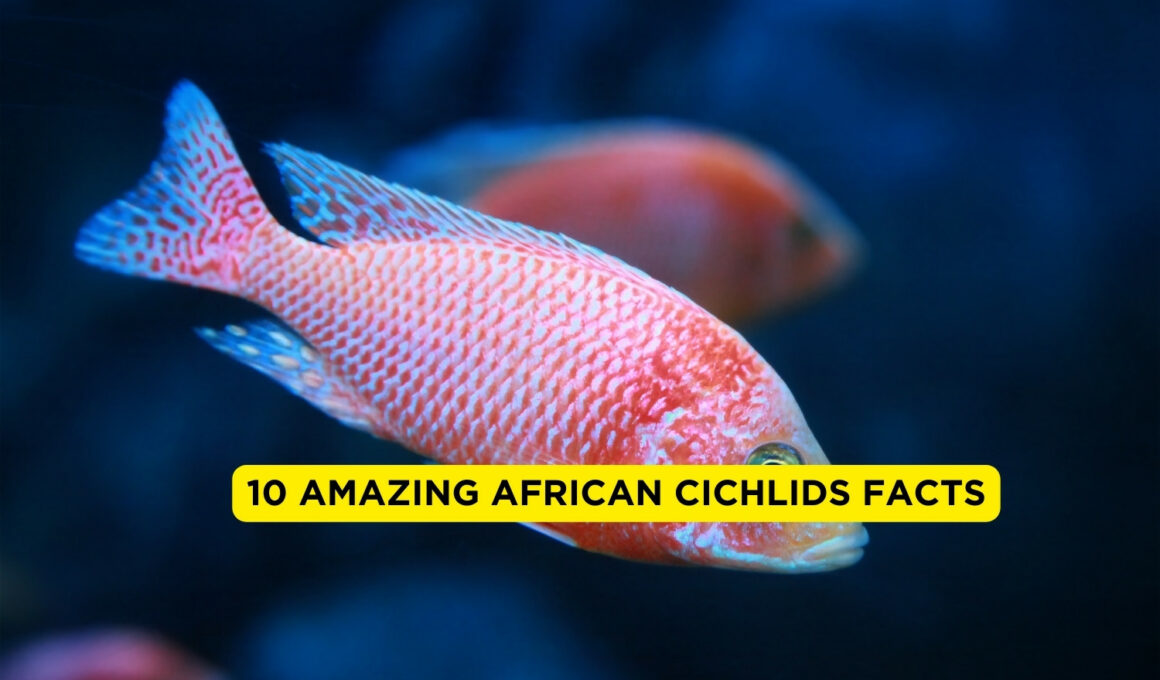In this article Show
As an experienced fishkeeper, I’ve had the pleasure of observing these vibrant creatures up close and learning about their intriguing behaviors and characteristics.
African Cichlids are not your ordinary freshwater fish. They bring a burst of color and energy to any tank, making them a standout addition to your aquatic family.
From their diverse species and unique breeding habits to their specific care requirements, there’s so much to uncover about these lively inhabitants of the underwater world. Whether you’re a seasoned aquarist or just starting out, these insights will enhance your appreciation and understanding of African Cichlids.
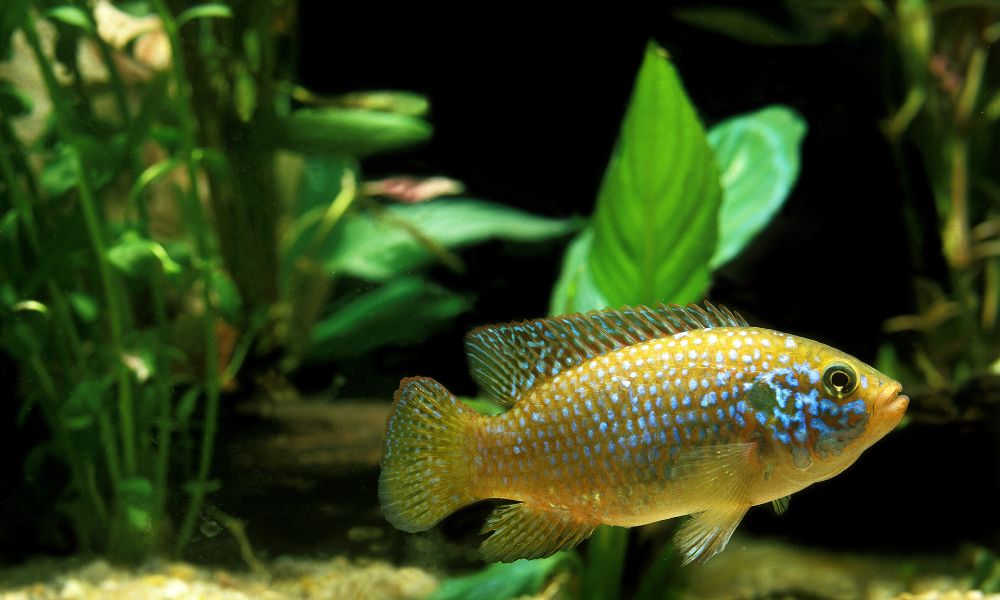
Fact 1: Diverse Species
One of the most striking features of African Cichlids is their incredible diversity. With over 1,200 species, these fish offer a kaleidoscope of colors, sizes, and behaviors that can captivate any fish enthusiast.
Ranging from the diminutive shell-dwellers of Lake Tanganyika to the larger, more robust species found in Lake Malawi, African Cichlids come in a variety of shapes and sizes that can suit almost any aquarium setup.
Color-wise, these fish are a true spectacle. You can find African Cichlids in almost every hue imaginable – bright blues, radiant reds, and stunning yellows, often combined in intricate patterns that are unique to each species. This coloration isn’t just for show; it plays a vital role in their social interactions and breeding behaviors.
Behaviorally, African Cichlids are equally diverse. Some species are peaceful and can coexist with other fish, while others are more territorial and require careful planning to ensure harmony in your tank. They exhibit fascinating social structures and behaviors, from complex mating dances to the way they establish territories and interact with tank mates.
Fact 2: Vibrant Colors and Patterns
African Cichlids are renowned for their striking colors and patterns, a feature that truly sets them apart in the world of freshwater fish. These vibrant hues are not just a feast for the eyes; they are a window into the biology and behavior of these remarkable creatures.
Each species of African Cichlid boasts a unique color scheme. From the electric blues of the Mbuna Cichlids to the fiery reds of the Peacock Cichlids, their palettes are rich and varied. It’s not uncommon to see a single fish displaying multiple colors, with patterns that range from bold stripes to intricate spots and speckles.
But why are they so colorful? The answer lies in their natural behavior and environment. Coloration in African Cichlids is often a sign of health and vitality, playing a crucial role in mating rituals and territorial displays. Males, in particular, tend to exhibit brighter colors during breeding season as a way to attract females and ward off rivals.
Moreover, these patterns are not static. African Cichlids can change their coloration based on mood, health, and social status, adding another layer of fascination to their keeping. This dynamic color display is not just visually stunning but also an indicator for keepers to monitor their fish’s well-being and social harmony.
Fact 3: Unique Breeding Behaviors
Among the many intriguing aspects of African Cichlids, their breeding behaviors stand out as particularly fascinating. One of the most remarkable practices observed in these fish is mouthbrooding, a method of caring for offspring that highlights the Cichlids’ unique approach to reproduction and parental care.
Mouthbrooding is primarily seen in many African Cichlid species from Lake Malawi and Lake Tanganyika. In this process, after the eggs are fertilized, the female collects and carries them in her mouth.
She does this to protect her young from predators and environmental hazards, providing a safe haven until the fry (baby fish) are ready to fend for themselves. During this period, which can last several weeks, the mother does not eat, sacrificing her own nourishment to ensure the safety of her offspring.
What makes this even more interesting is the level of dedication shown by mouthbrooding females. They meticulously care for the eggs, regularly rolling them within their mouths to ensure proper oxygenation and development.
Once the fry is ready to venture out, the mother releases them into the water. However, if she senses danger, she can quickly scoop them back into her mouth for protection.
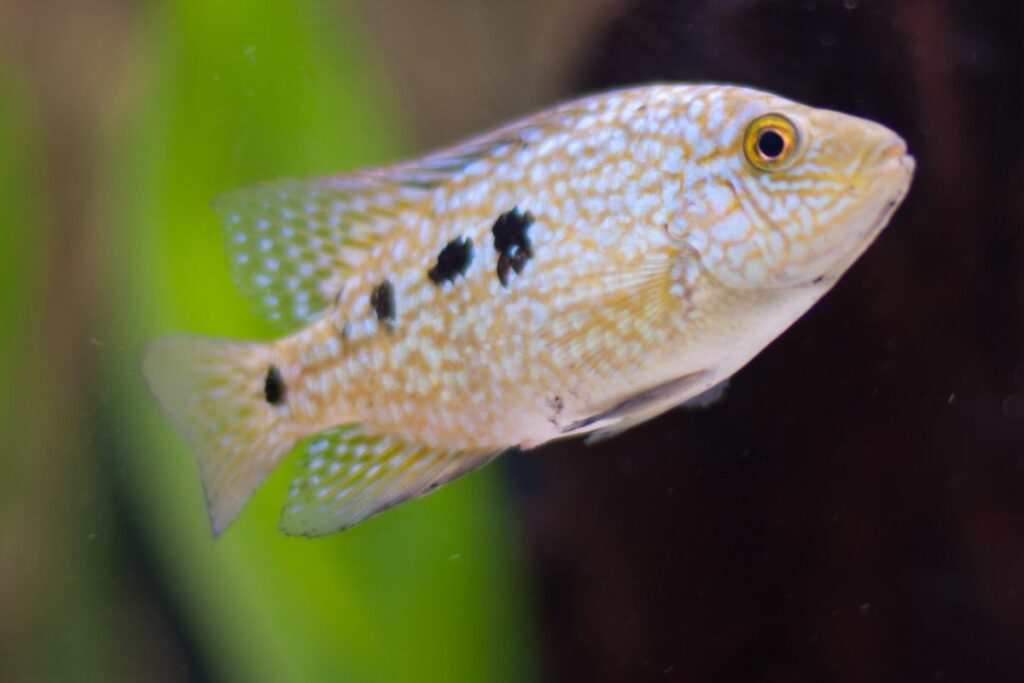
Fact 4: Habitat and Distribution
The natural habitat of African Cichlids is as diverse and fascinating as the fish themselves. These remarkable creatures primarily hail from the Great Lakes of Africa, a region known for its unique ecosystems and stunning biodiversity.
The three most notable lakes where African Cichlids are found are Lake Malawi, Lake Tanganyika, and Lake Victoria. Each of these lakes offers a distinct environment, shaping the various species of Cichlids that live there.
Lake Malawi, often regarded as the home of the most diverse Cichlid populations, boasts clear, warm waters with a plethora of rocky formations and sandy bottoms. This environment is ideal for the numerous species of Mbuna, the rock-dwelling Cichlids known for their vibrant colors and dynamic social structures.
Lake Tanganyika, the oldest and deepest of the three, provides a habitat for some of the most uniquely adapted Cichlids. Its depth creates a range of ecological niches, allowing for a variety of species with specialized feeding and breeding habits. The lake is renowned for its species that exhibit fascinating behaviors, like shell-dwelling and intricate mating rituals.
Lastly, Lake Victoria, though it has faced significant ecological challenges, is home to a group of Cichlids known for their rapid evolutionary adaptations. The lake’s changing conditions have led to a remarkable display of adaptive radiation in these fish, showcasing their ability to evolve and thrive in varying environments.
Fact 5: Diet and Feeding Habits
The diet of African Cichlids varies greatly depending on the species, but there are some commonalities in their feeding habits, both in the wild and in aquariums.
In their natural habitat, African Cichlids’ diets are largely influenced by their environment. Some species are herbivores, grazing on algae and plant matter, while others are carnivores, feeding on small fish, insects, and larvae.
There are also omnivorous Cichlids that enjoy a mix of both plant and animal matter. The diverse feeding strategies of these fish are a testament to their adaptability in the varied ecosystems of the African Great Lakes.
In an aquarium setting, the diet of African Cichlids should mimic their natural food sources as closely as possible. Commercially available Cichlid pellets or flakes are formulated to provide a balanced diet and are a good base for their nutrition.
However, for optimal health, it’s beneficial to supplement this with other foods like fresh or frozen brine shrimp, bloodworms, and vegetable matter. Herbivorous species will appreciate the addition of spirulina or blanched vegetables, while carnivorous ones thrive on meatier foods.
Fact 6: Social Structure and Behavior
African Cichlids exhibit fascinating social structures and behaviors, particularly when it comes to their territorial nature. Understanding these dynamics is crucial for anyone interested in keeping these vibrant fish in their aquarium.
In the wild, African Cichlids are known for their complex social interactions. Many species are highly territorial, especially males, who establish and defend territories to attract females for breeding. These territories are often chosen for their suitability for spawning and rearing young, like areas with abundant food or hiding spots.
The social hierarchy among African Cichlids is also quite pronounced. Dominant males typically exhibit brighter colors and are more active in defending their territory, while subdominant males and females tend to be less colorful and more cautious. This hierarchy can influence everything from feeding to breeding, shaping the daily life of the Cichlid community.
In aquariums, this territorial behavior needs to be managed carefully. Providing ample space, hiding spots, and visual barriers in the tank can help reduce conflicts. It’s also important to consider the specific temperament and compatibility of different species when setting up a Cichlid tank, as some species may be more aggressive or territorial than others.
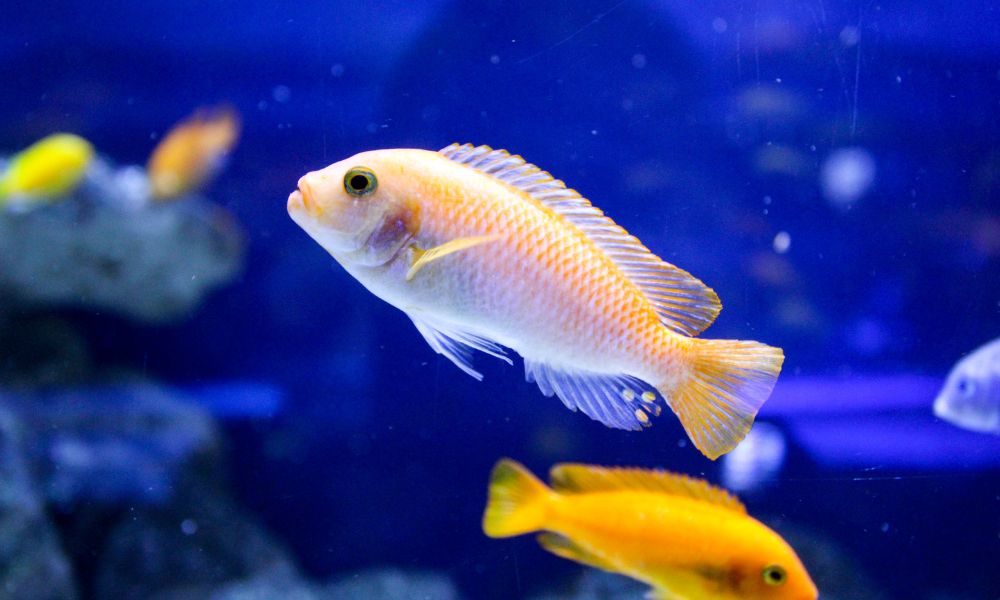
Fact 7: Lifespan and Health
African Cichlids are generally hardy fish with a decent lifespan, making them a rewarding choice for aquarium enthusiasts. On average, these fish can live between 5 to 10 years, although some species may live even longer with proper care.
Maintaining good health in African Cichlids is key to achieving their full lifespan. One common health issue is “Malawi Bloat,” a type of fish bloat that can be fatal if not treated promptly. This condition is often related to diet, so providing a balanced diet and avoiding overfeeding are crucial preventive measures.
Another concern is the susceptibility to parasitic and bacterial infections, particularly in overcrowded or poorly maintained tanks. Regular tank cleaning, maintaining good water quality, and avoiding stressful conditions can greatly reduce the risk of these health problems.
Additionally, African Cichlids can sometimes suffer from aggression-related injuries due to their territorial nature. Providing enough space, proper tank setup, and compatible tank mates can help minimize these incidents.
Fact 8: Importance in Local Ecosystems
African Cichlids play a vital role in the ecosystems of the African Great Lakes, contributing significantly to the ecological balance and biodiversity of these habitats.
In these ecosystems, African Cichlids serve as both predators and prey. They help control algae growth and manage populations of smaller organisms, which is crucial for maintaining the health of the aquatic environment. By feeding on algae and other small invertebrates, they keep these populations in check, preventing overgrowth that could disrupt the ecosystem’s balance.
Moreover, Cichlids themselves are a food source for larger predators, including birds and larger fish species. This predatory-prey relationship is essential for the natural food chain and helps maintain the ecological equilibrium of the lakes.
Their varied breeding and nesting behaviors also play a role in shaping the physical environment of the lakes. For example, some species that sift through sand and sediment can influence the structure of the lake bed, impacting other aquatic life forms.
The diversity of African Cichlids also contributes to genetic variability in the ecosystem, which is critical for adaptation and resilience in the face of environmental changes.
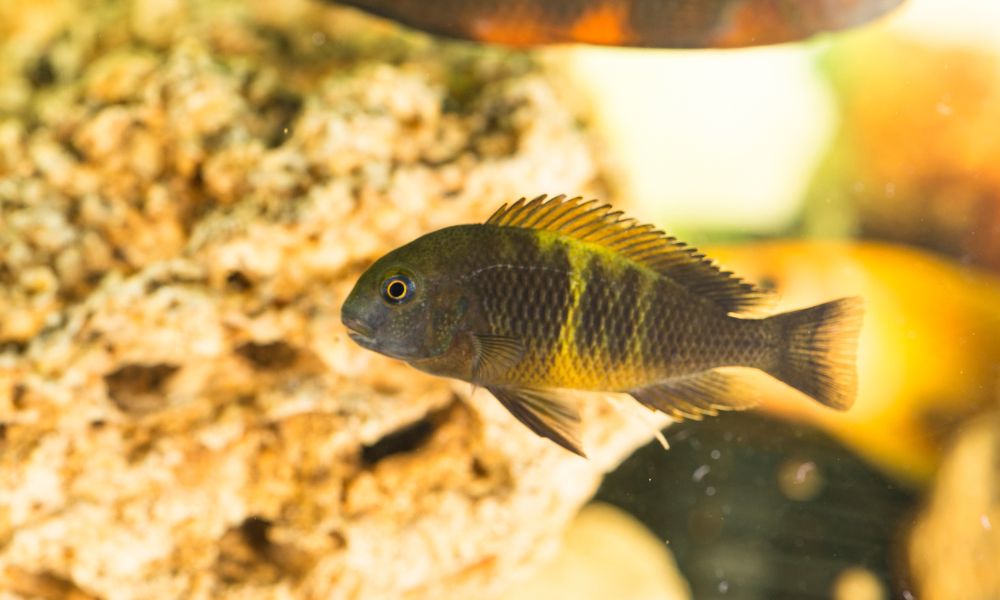
Fact 9: Aquarium Care Tips
Keeping African Cichlids in home aquariums can be a rewarding experience, but it requires specific care and attention to ensure their well-being. Here are some essential tips for their care:
Tank Size and Setup
African Cichlids need ample space due to their active nature and territorial behaviors. A larger tank (at least 30 gallons for smaller species, more for larger ones) with plenty of hiding places, like rocks and caves, is ideal. This setup helps reduce aggression and stress among the fish.
Water Conditions
These fish thrive in alkaline water with a pH level between 7.5 and 8.5. Regular water testing and maintenance are crucial to keep these levels stable. The water temperature should be kept between 74-82°F (23-28°C).
Filtration and Aeration
Good filtration is essential to handle the waste produced by Cichlids and to keep the water clean. Additionally, adequate aeration ensures a healthy oxygen level in the tank.
Diet
Feed your African Cichlids a balanced diet suitable for their specific type, as mentioned earlier. Avoid overfeeding and offer a variety of foods to ensure proper nutrition.
Tank Mates
Choose tank mates carefully, considering the temperament and size of the Cichlids. Avoid mixing them with much smaller, more passive fish, as they can become targets for aggression.
Regular Maintenance
Regular tank cleaning and water changes are vital to prevent disease and keep the fish healthy. This includes monitoring the water quality and removing any uneaten food or debris.
Fact 10: Conservation Status
The conservation status of African Cichlids is a growing concern, as these species face various environmental challenges. While many Cichlids are not currently listed as endangered, their habitats in the Great Lakes of Africa are under threat, which could have significant implications for their populations.
Key threats to African Cichlids include habitat destruction, pollution, and the introduction of invasive species. Human activities, such as overfishing and unsustainable agricultural practices, lead to habitat degradation and water quality deterioration in the lakes where these fish reside. This can result in a decline in Cichlid populations and a loss of biodiversity.
Climate change also poses a risk to African Cichlids, as changes in water temperature and rainfall patterns can affect their breeding cycles and food availability. The delicate balance of the ecosystems in which they live makes them particularly vulnerable to such environmental changes.
Conservation efforts are essential to protect these unique species and their natural habitats. This includes measures like establishing protected areas, promoting sustainable fishing practices, and conducting research to better understand and mitigate the impacts of environmental changes.






